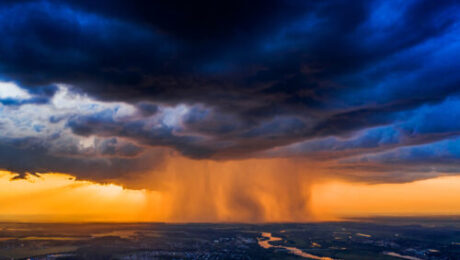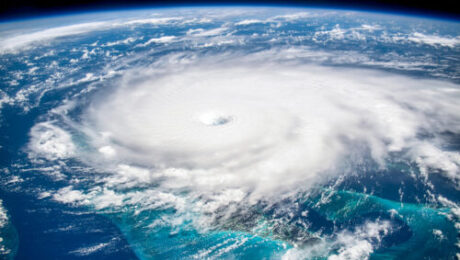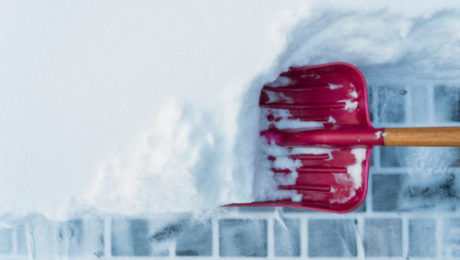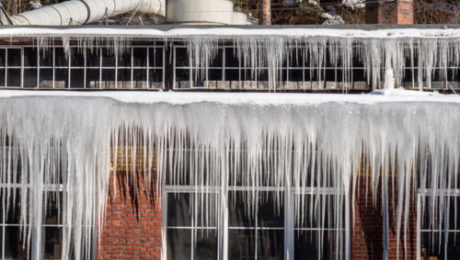The Impact of Secondary Perils on Property Insurance
This article is from RISQ Consulting’s Zywave client portal, a resource available to all RISQ Consulting clients. Please contact your Benefits Consultant or Account Executive for more information or for help setting up your own login.

Secondary perils, such as severe convective storms, floods, wildfires and hailstorms, have significantly impacted the commercial property market. In fact, according to industry data, secondary perils have consistently accounted for over 50% of insured natural disaster losses in recent years.
This article provides more information on secondary perils, including their impact on the property insurance market. It also offers tips on how businesses can mitigate associated risks.
What Are Secondary Perils?
Secondary perils are generally small to mid-sized loss events or secondary effects that follow a primary catastrophe such as an earthquake or a hurricane. According to credit rating agency AM Best, secondary perils account for a larger share of losses from catastrophes compared to primary perils, and it is now the norm that at least one secondary peril event creates losses greater than $10 billion each year.
This is a shift from historical patterns where primary perils represented the highest loss potential. Factors including climate change and population growth in coastal areas and other areas susceptible to catastrophes have led to this shift in the risk landscape.
Evolving Risk Modeling for Secondary Perils
The insurance industry has tried to address the challenges presented by secondary perils. For example, more sophisticated modeling tools are being developed to better understand and manage the risks. However, modeling capabilities are still limited compared to models for primary perils. Additionally, AM Best notes that it will be vital for secondary peril models to be continually recalibrated due to the quickly changing risk landscape.
Pricing Challenges and Capacity Constraints
Pricing challenges arise as secondary peril weather events become more common and severe. Since the technology used to model secondary perils is not as mature as those for primary perils, there is more uncertainty in underwriting them. This can lead to volatility in insurance pricing, making it harder for businesses to account for costs.
Capacity constraints also pose a significant challenge in the property insurance sector, particularly as it relates to secondary perils. These constraints can also lead to market volatility. They may result in insurers limiting coverage or pulling back from high-loss areas, leaving insureds to bear a larger portion of the risk.
Coverage Gaps
Coverage gaps for secondary perils are primarily due to underinsurance and limited availability of coverage. Additionally, property insurance policies may not cover losses caused by secondary perils like floods, leaving businesses to pay out of pocket for resulting expenses. Businesses should engage with insurance brokers and carriers to understand their coverage options and ensure they have adequate protection.
Risk Mitigation
Comprehensive risk assessment is challenging due to a lack of understanding and modeling capabilities. However, to mitigate the risks of secondary perils, businesses can adopt several risk management strategies. One such approach is business continuity planning, which involves identifying potential risks and creating procedures to minimize their impact. Additionally, investing in risk mitigation measures, such as infrastructure improvements or changes in operational practices, can reduce a business’s vulnerability to secondary perils.
Conclusion
While secondary perils present significant challenges, businesses can take proactive steps to understand these risks, ensure adequate insurance coverage and implement strategies to mitigate their impact. Contact us today for more information.
- Published in Blog
I Screen, You Screen, We All Screen With Sunscreen!
By Jennifer Outcelt, Creative Content Architect
Ah, finally, the warm embrace of the Alaskan sun! While it brings joy to our frozen hearts and some much-needed Vitamin D, it also brings many potential risks. But just like you put on a down coat to protect your skin from the harsh winter, so must you put on daily layer of sunscreen protect against harmful ultraviolet (UV) rays. Let’s take a stroll (perhaps with a parasol?) through the history of sunscreen, exploring its development and the crucial role it plays in preventing cancer and other illnesses.
The quest for sun protection dates back centuries. Ancient civilizations instinctively sought ways to shield themselves from the sun’s scorching rays. While finding shade was always the simplest solution, it was not always the most practical for ancient people on the go. And since the umbrella hat would not be invented until 1880, alternative mobile sun shielding technologies were needed. Ancient Egyptians crafted primitive sunscreens using ingredients like rice bran and jasmine extract. In China, rice paste and white lead were employed, creating a pale complexion which doubled to symbolize social status through sun avoidance.
Fast forward to the 20th century, where brilliant minds began paving the way for modern sunscreen. In 1938, a Swiss chemist named Franz Greiter invented the world’s first commercial sunscreen, introducing the concept of Sun Protection Factor (SPF). However, it was not until the 1970s that sunscreen gained mainstream popularity and recognition for its vital role in safeguarding skin health.
With growing awareness of the link between sun exposure and health risks, the importance of sunscreen soared. Sunscreen formulations became more advanced, offering improved protection against both UVA and UVB rays. Research unveiled the direct correlation between unprotected sun exposure and skin cancer, prompting organizations like the American Cancer Society to advocate for regular sunscreen use.
The significance of sunscreen extends beyond preventing skin cancer. Prolonged exposure to UV radiation can lead to sunburn, premature aging, and eye damage, including cataracts. By applying sunscreen, individuals can shield themselves from these harmful effects and maintain healthier, more youthful-looking skin. Sunscreen also plays a crucial role in preventing other types of cancer. Lips, for instance, are susceptible to UV damage, making the use of lip balm or lip-specific sunscreens vital. Moreover, sunscreen protects against squamous cell carcinoma, basal cell carcinoma, and even melanoma— the most aggressive form of skin cancer. Any suspicious spots you find on your body (new or enlarging spots, larger than a pencil eraser head, irregular edges, discolored areas, scaly, etc.) should be looked at by a dermatologist.
With modern society fully aware of the importance of sunscreen (though some still choose to ignore it’s benefits), it is now an integral part of personal care as well as numerous industries. From lotions, clays, and sprays to gels and sticks, sunscreen has evolved to offer convenient and effective options for everyone. Outdoor workers, Lifeguards, athletes, and even children at schools and summer camps are encouraged to use sunscreen regularly. Moreover, clothing and accessories with built-in UV protection have become increasingly popular, providing an extra layer of defense against harmful cancer-causing rays.
Sunscreen has come a long way from ancient concoctions to modern-day sun shields. Its historical development and the mounting evidence of its importance in preventing cancer and other illnesses have solidified its status as a must-have in our daily routines. Hopefully this shed some light on why you might not want so much light shed on your skin. So say it with me folks, “I Screen, You Screen, We All Screen with Sunscreen!”
- Published in Blog
Stronger Hurricanes to Put More Properties at Risk
This article is from RISQ Consulting’s Zywave client portal, a resource available to all RISQ Consulting clients. Please contact your Benefits Consultant or Account Executive for more information or for help setting up your own login.

Over 13.4 million properties not currently exposed to hurricane-force wind damage will face increased risk over the next 30 years as climate change propels more intense storms, according to new research from First Street Foundation.
“Compared to the historic location and severity of tropical cyclones, this next generation of hurricane strength will bring unavoidable financial impacts and devastation that have not yet been priced into the market,” said Matthew Eby, founder and CEO of First Street, a nonprofit research and technology group.
First Street’s models also estimated the average annual loss due to tropical cyclone damage rising to $19.9 billion, with about $1 billion in higher exposure in Florida alone.
Other regions that face lower exposure now will be even more at risk in the future, First Street warned. The study projected losses in the Northeastern United States to increase by 87% over the next three decades as hurricanes track further north.
“The northward increase in hurricane activity may significantly impact buildings that have not been built to a code that considers the wind speeds they will likely face over the next 30 years,” researchers said. “Additionally, the count of properties with any average annual loss from wind will increase by about 55%, with about 2.2 million newly-impacted properties by 2053.”
The total number of storms isn’t expected to change, but the intensity will, according to the report. Historical evidence already illustrates rising risk: The proportion of major hurricanes (Categories 3, 4, and 5) has quadrupled since the 1980s, from 10% of all tropical cyclone events to over 40% today. First Street attributed the change to rising air and sea-surface temperatures fueling storms, as well as increased moisture levels in the air and shifts in wind patterns.
“Hurricanes affect communities within the United States more frequently and severely than other natural disasters,” said First Street in the report. “As a result, tropical cyclones have caused a total of $1.194 trillion (consumer price index-adjusted) in losses in the United States between 1980 and 2022, with an average cost of approximately $21 billion per event.”
Understanding evolving risk can help insurers set property rates more accurately, assist communities in developing resiliency plans and allocating resources, and give property owners information on how to better protect themselves and their homes and businesses, First Street said.
For more risk management news and insights, contact RISQ Consulting today.
- Published in Blog
Monitoring Snow Loads to Protect Structures
This article is from RISQ Consulting’s Zywave client portal, a resource available to all RISQ Consulting clients. Please contact your Benefits Consultant or Account Executive for more information or for help setting up your own login.

Major snow events can impact the integrity of a structure, making it imperative for commercial property owners to understand their building’s characteristics and structural system prior to the start of the snow season. Having familiarity with the building structure can help owners determine if any changes occurred during a major snow event and if repairs are necessary. This article discusses key building information owners should be aware of, what to look for during a pre-season inspection and warning signs of a building in duress.
Key Building Information
A commercial property owner’s knowledge of their building could be the difference between getting through a major snow event safely or experiencing structural failure. Property owners should know the following regarding the current condition of the structure:
- Applicable building codes
- Design snow load
- Structural framing system
- Thermal properties
- Renovation history
Pre-season Inspection
A proper commercial building inspection can reveal the actual condition of a property and give owners the opportunity to fix any problems before the snow season begins. To mitigate damage and identify any potential issues, commercial property owners should:
- Perform a detailed inspection. Check for cracks, split seams, buckling, loose parts, staining, mold and rot while inspecting:
- Surface membranes
- Roof vents
- Flashing
- Field tears
- Gutters
- Drainage pipes
- Clean debris. Ensure the roof is clear of debris, including fallen branches, leaves and garbage. Debris can prevent water from draining, allowing snow to buildup and cause water damage or add weight to the structure.
- Look for pooling water. Keep an eye out for areas where water pools, as this could be an indication of a clogged drain or slow-draining line.
- Check the flashing. Inspect the flashing—the thin material used to direct water away from certain areas on the roof—before winter for cracks or crevices that would allow water to enter.
- Inspect the downspouts. Ensure downspouts are properly attached to the gutters, clear of debris and that their termination bars are sealed.
While these can all be inspected regularly by the owner or an employee, utilizing a certified roof inspector who knows what to look for can help ensure the roof is in good condition before any major snow events occur.
Warning Signs of Duress
Roof decks or framing that is under duress from snow loads typically display warning signs. Commercial property owners should watch for the following signs in wood, metal and steel constructed buildings:
- Ceiling tiles or boards that are sagging or falling out of the ceiling grid
- Sprinkler lines and sprinkler heads that are sagging or deflecting below suspended ceilings
- Roof members, such as metal decking or plywood sheathing, that are sagging
- Doors or windows that no longer open or close
- Wood members that are cracked or split
- Walls or masonry that are cracked
- Truss bottom chords or web members that are bowing
- Popping, cracking and creaking noises
If any of these warning signs are observed, the building should be promptly evacuated, and a detailed structural inspection should be conducted by a qualified professional.
Conclusion
Major snow events can cause a lot of damage to a commercial structure, especially if it hasn’t been properly inspected and maintained. Therefore, commercial property owners should ensure that their building is prepared for winter weather by inspecting the structure and making any necessary repairs. For more information, contact us today.
- Published in Blog
Monitoring Snow Loads to Protect Structure
This article is from RISQ Consulting’s Zywave client portal, a resource available to all RISQ Consulting clients. Please contact your Benefits Consultant or Account Executive for more information or for help setting up your own login.
Major snow events can impact the integrity of a structure, making it imperative for commercial property owners to understand their building’s characteristics and structural system prior to the start of the snow season. Having familiarity with the building structure can help owners determine if any changes occurred during a major snow event and if repairs are necessary. This article discusses key building information owners should be aware of, what to look for during a pre-season inspection and warning signs of a building in duress.
Key Building Information
A commercial property owner’s knowledge of their building could be the difference between getting through a major snow event safely or experiencing structural failure. Property owners should know the following regarding the current condition of the structure:
- Applicable building codes
- Design snow load
- Structural framing system
- Thermal properties
- Renovation history
Pre-season Inspection
A proper commercial building inspection can reveal the actual condition of a property and give owners the opportunity to fix any problems before the snow season begins. To mitigate damage and identify any potential issues, commercial property owners should:
- Perform a detailed inspection. Check for cracks, split seams, buckling, loose parts, staining, mold and rot while inspecting:
- Surface membranes
- Roof vents
- Flashing
- Field tears
- Gutters
- Drainage pipes
- Clean debris. Ensure the roof is clear of debris, including fallen branches, leaves and garbage. Debris can prevent water from draining, allowing snow to buildup and cause water damage or add weight to the structure.
- Look for pooling water. Keep an eye out for areas where water pools, as this could be an indication of a clogged drain or slow-draining line.
- Check the flashing. Inspect the flashing—the thin material used to direct water away from certain areas on the roof—before winter for cracks or crevices that would allow water to enter.
- Inspect the downspouts. Ensure downspouts are properly attached to the gutters, clear of debris and that their termination bars are sealed.
While these can all be inspected regularly by the owner or an employee, utilizing a certified roof inspector who knows what to look for can help ensure the roof is in good condition before any major snow events occur.
Warning Signs of Duress
Roof decks or framing that is under duress from snow loads typically display warning signs. Commercial property owners should watch for the following signs in wood, metal and steel constructed buildings:
- Ceiling tiles or boards that are sagging or falling out of the ceiling grid
- Sprinkler lines and sprinkler heads that are sagging or deflecting below suspended ceilings
- Roof members, such as metal decking or plywood sheathing, that are sagging
- Doors or windows that no longer open or close
- Wood members that are cracked or split
- Walls or masonry that are cracked
- Truss bottom chords or web members that are bowing
- Popping, cracking and creaking noises
If any of these warning signs are observed, the building should be promptly evacuated, and a detailed structural inspection should be conducted by a qualified professional.
Conclusion
Major snow events can cause a lot of damage to a commercial structure, especially if it hasn’t been properly inspected and maintained. Therefore, commercial property owners should ensure that their building is prepared for winter weather by inspecting the structure and making any necessary repairs. For more information, contact us today.
- Published in Blog







